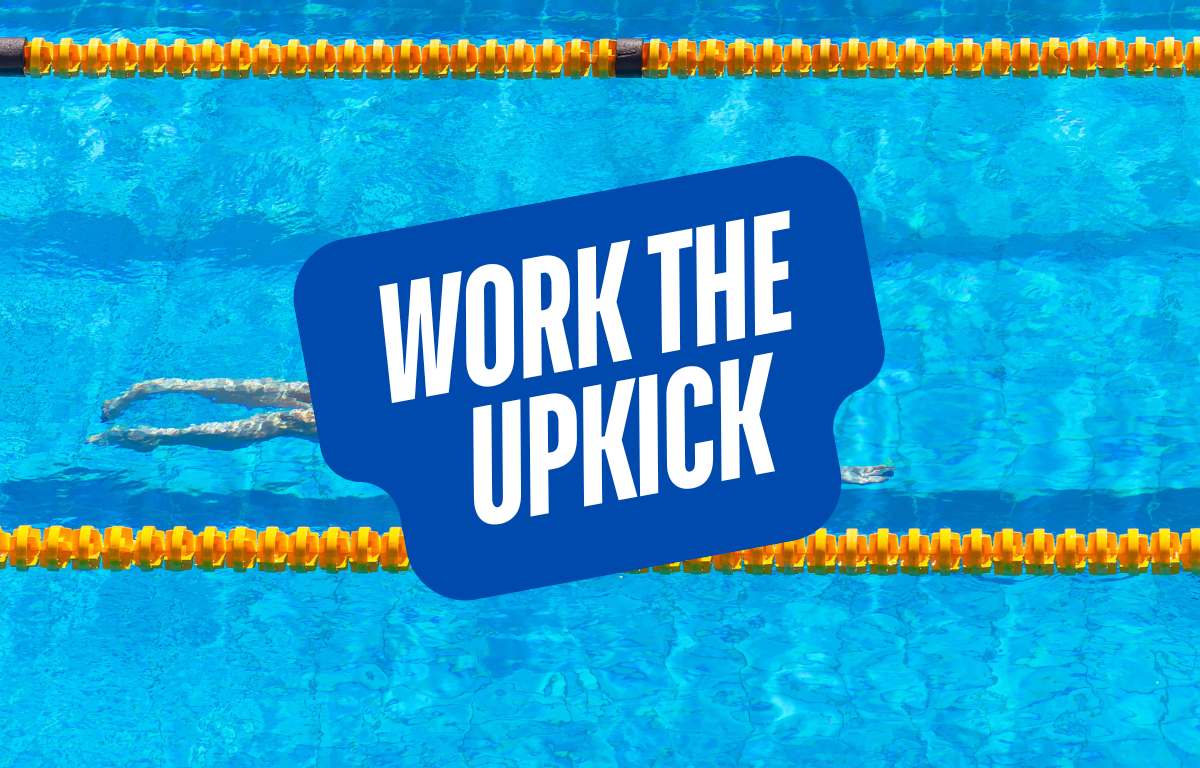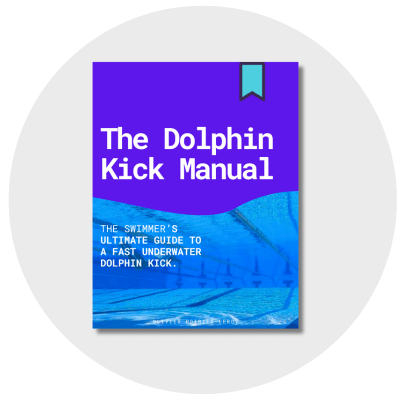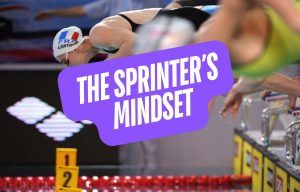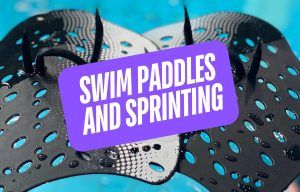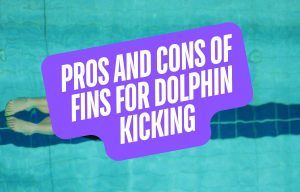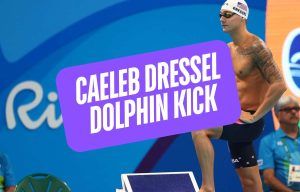Ready to take your dolphin kick to new levels? Here’s why focusing on the upkick may be the key to giving you a faster underwater dolphin kick.
The underwater dolphin kick has become an essential tool for swimmers of all strokes in recent years.
This is especially the case in short course pools, where underwaters can drink up 60-65% of total race distance.
Swimmers like Caeleb Dressel, Gretchen Walsh, Maggie Mac Neill, Jordan Crooks, Michael Phelps, and countless others have shown the potency of a powerful dolphin kick that wins races and crushes souls.
And while there are a lot of different ways to improve your underwater dolphin kick, from simply doing more of it in practice, counting your kicks, adding the right core exercises, and hitting the weight room, it’s the lesser talked about phase of the dolphin kick that we will focus on today.
Yup, the upkick.
Also known as the upbeat, the upkick is the missing part of many swimmers’ dolphin kicks. And likely not for the reasons you think.
Here’s why you should spend more time getting your dolphin (up)kick on.
Fast upkick = fast dolphin kick
A fast upkick is frequently shown to be linked to faster overall dolphin kicks.
Atkinson et al. (2014) found that faster kickers spent a more level amount of time in the two kick phases. Slower kickers spent more time lingering in the upkick, lounging around, leading to longer deceleration periods and slower kicking.
When swimmers have kick asymmetry (e.g. strong, booming downkick paired with a slow, laggard upkick), their dolphin kick is slower than an upkick with faster toe velocity (Higgs et al., 2017), which is one of the best ways to measure water displacement (propulsion) in the dolphin kick.
And a study examining the different muscles used during phases of the dolphin kick, with nine elite Japanese swimmers (including an Olympic medalist in the butterfly), who dolphin kicked at an average speed of 1.8m/s, demonstrated almost identical time spent in the downbeat (48.5%) and upbeat (51.5%) phases.
Intuitively, this should make sense.
By hitting the gas pedal on the upkick, and displacing more water, creating a more balanced kicking motion, and promoting more undulation, we uncork faster kicking.
More time spent in propulsive phases
The downkick phase is the moneymaker kick phase for creating dolphin kick magic. It’s the engine, the power plant, the propulsion phase. There’s no question about that.
The downkick is where we bring the thunder.
But in order to get more of that thunder, swimmers need to spend less time in less propulsive phases of the kick, which includes transitions and a lazy upkick phase. A faster upkick leads to increased kick frequency because the legs are proportionally spending more time in the propulsive part of the kick.
One of the big “ah ha” moments of swimmers I work with is reminding them that a quicker upkick gets you back into the phase where you generate the most propulsion faster.
A fast upkick reduces drag
When swimmers are at the tail end of the down kick, they are in a drag-heavy body position. Legs are extended and pointing at a steep angle towards the bottom of the pool, with the thighs and shins catching more water than a pool gutter.
According to Cohen et al. (2011), at the bottom of the downkick we are creating ~35% more frontal drag compared to when the body is streamlined.
A streamlined body position is everything when swimming, especially when diving into the water or pushing off, and this goes when dolphin kicking, too.
Getting into your upkick phase more quickly gets you out of a body position that is a swimmer’s equivalent of driving with two parking brakes on.
The Bottom Line
Dolphin kicking fast is one of the best things you can do for improving times in the pool. It’s a skill that can be used across most distances (even Leon Marchand, on the final lap of the 400IM at the Paris Olympics, kicked out to nearly 15m on the last turn of the race) but is especially important for short course swimmers.
Building a snappy upkick is one of the best things you can do in service of improving your underwater dolphin kick. It keeps us in propulsive phases for longer, reduces drag, and increases that almighty flow in the kick cycle.
When you head to the pool today, and you push off or dive in, don’t sleep on the upkick!
The Ultimate Guide for a Faster Underwater Dolphin Kick
Want help leveling up your underwater dolphin kick? The Dolphin Kick Manual is the ultimate resource for helping swimmers and swim coaches develop a world-class underwater dolphin kick.

The Dolphin Kick Manual is a beastly 240+ pages of actionable insights and research into elite dolphin kicking technique and performance. It details everything from mastering undulation to vortex recapturing to structuring a dryland program for dolphin kicking success.
It combines evidence-based insights with a collection of 20 ready-to-go sets and a 6-week Action Plan to help swimmers set a course for dolphin kicking success.
Train smarter and kick faster.

